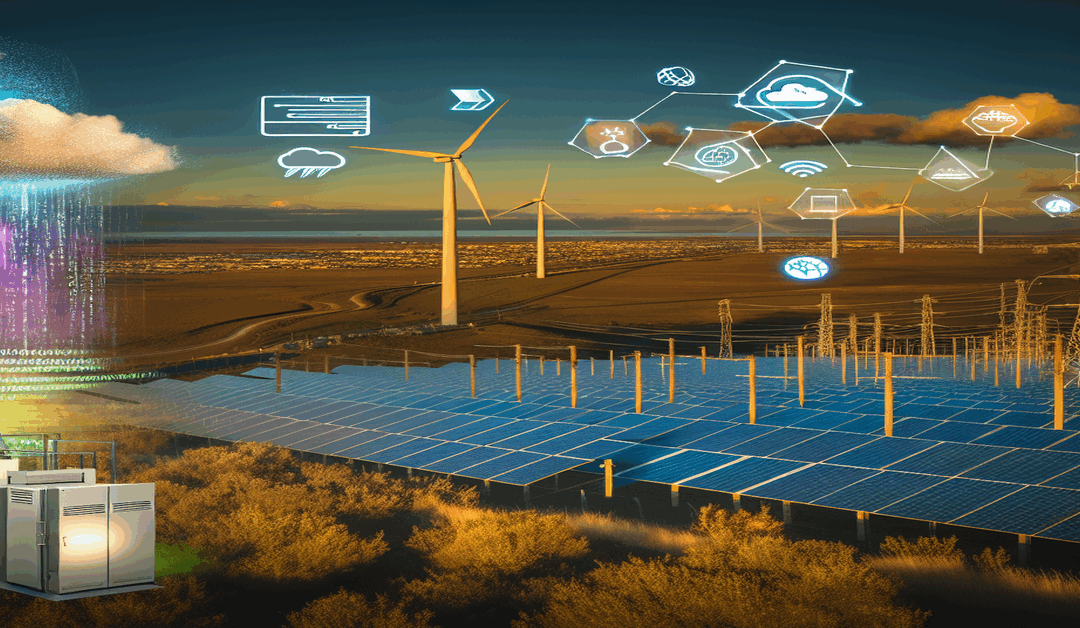Harnessing the Power of Advanced Analytics and AI for a More Resilient Grid
The energy landscape is evolving at an unprecedented pace, and utilities are facing a host of challenges that threaten the reliability and resilience of the grid. From the integration of distributed energy resources (DERs) to the increasing frequency and severity of wildfires and other extreme weather events, the pressure is on to find innovative solutions that can keep the lights on and the power flowing.
Fortunately, the rise of advanced analytics and artificial intelligence (AI) is providing utilities with powerful new tools to address these challenges head-on. By leveraging the vast amounts of data generated by the grid and applying cutting-edge analytics techniques, utilities can gain unprecedented insights into the health and performance of their assets, predict and prevent outages before they occur, and optimize their operations for maximum efficiency and reliability.
The Challenges of a Changing Grid
One of the biggest challenges facing utilities today is the **rapid growth of DERs**, such as rooftop solar, wind turbines, and battery storage systems. While these technologies offer many benefits, including reduced carbon emissions and increased energy independence, they also introduce new complexities and uncertainties into the grid.
Unlike traditional centralized power plants, DERs are highly variable and unpredictable, with output that can fluctuate wildly based on weather conditions and other factors. This variability can put significant strain on the grid, leading to voltage fluctuations, frequency deviations, and other issues that can compromise reliability and power quality.
At the same time, utilities are also grappling with the **increasing threat of wildfires and other severe weather events**. As climate change continues to drive more frequent and intense storms, heatwaves, and droughts, the risk of damage to critical infrastructure is growing. Wildfires, in particular, pose a major risk to the grid, with the potential to damage or destroy transmission lines, substations, and other key assets.
Finally, utilities are also facing the challenge of **aging infrastructure**, with many parts of the grid dating back decades or even centuries. As these assets reach the end of their useful lives, they become more prone to failures and outages, putting additional strain on already stretched maintenance budgets and resources.
The Promise of Advanced Analytics and AI
Fortunately, the rise of advanced analytics and AI is providing utilities with powerful new tools to address these challenges and build a more resilient, reliable grid. By leveraging the vast amounts of data generated by sensors, smart meters, and other devices across the grid, utilities can gain unprecedented insights into the health and performance of their assets, predict and prevent outages before they occur, and optimize their operations for maximum efficiency and reliability.
One key area where analytics and AI are making a big impact is in **improving data quality and resolution**. With the deployment of more advanced sensors and monitoring devices, utilities are now able to collect data at a much higher temporal and spatial resolution than ever before. This high-resolution data provides a much more granular and accurate picture of what’s happening across the grid, enabling utilities to identify potential issues and take corrective action before they escalate into major problems.
Another key application of analytics and AI is in **predictive maintenance**. By analyzing data on asset health and performance over time, utilities can identify patterns and anomalies that may indicate an impending failure. This allows them to proactively schedule maintenance and repairs, reducing the risk of unplanned outages and extending the life of critical assets.
The Role of SCADA and Cloud Computing
Of course, collecting and analyzing all this data requires a robust and scalable infrastructure, which is where **SCADA systems** and **cloud computing** come in. SCADA (supervisory control and data acquisition) systems have long been a cornerstone of grid operations, providing real-time monitoring and control of key assets and processes. However, traditional SCADA systems often lack the resolution and flexibility needed to fully leverage advanced analytics and AI.
To address this challenge, many utilities are turning to cloud computing and other **scalable software solutions**. By deploying their analytics and AI workloads in the cloud, utilities can take advantage of the massive scalability and flexibility offered by these platforms, enabling them to process and analyze data at a scale that would be impossible with traditional on-premises infrastructure.
At the same time, cloud computing also offers significant benefits in terms of **fleet management and sensor integration**. With the ability to easily deploy and manage large numbers of sensors and other devices across the grid, utilities can quickly scale their data collection and analysis capabilities to keep pace with the growing complexity and variability of the modern grid.
The Future of Grid Resilience and Reliability
As utilities continue to grapple with the challenges of a rapidly evolving energy landscape, the convergence of advanced analytics, AI, edge computing, and cloud technologies offers significant opportunities for enhancing grid resilience and operational efficiency.
By focusing on improving data resolution, processing technology, and scalability, utilities can lay the foundation for a data-driven transformation that will enable them to better predict and prevent outages, optimize their operations, and deliver the reliable, high-quality power that their customers demand.
As we look to the future, it’s clear that the utilities that prioritize investments in analytics and AI will be best positioned to thrive in an increasingly complex and dynamic energy landscape. By embracing these technologies and the insights they provide, utilities can build a more resilient, reliable, and sustainable grid that will serve their customers for generations to come.
#GridResilience #AdvancedAnalytics #ArtificialIntelligence #EnergyTransformation
-> Original article and inspiration provided by Mirrasoul “Mir” Mousavi
-> Connect with one of our AI Strategists today at ReviewAgent.ai

